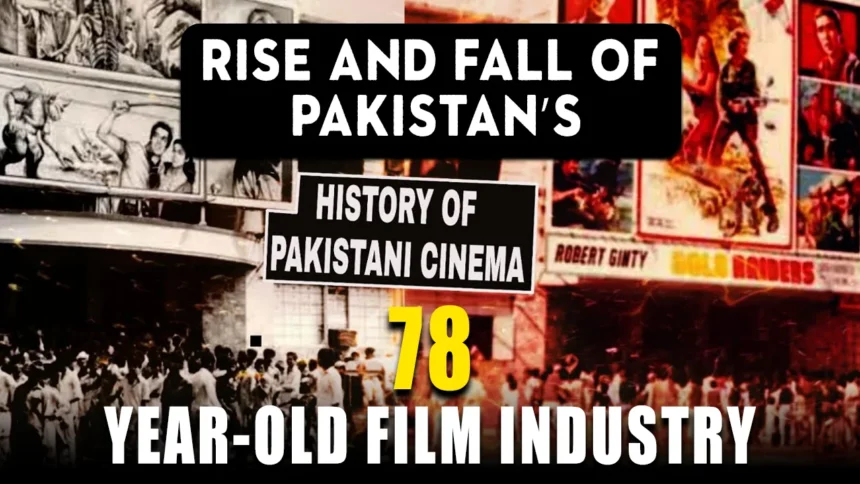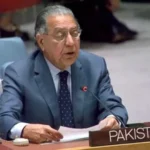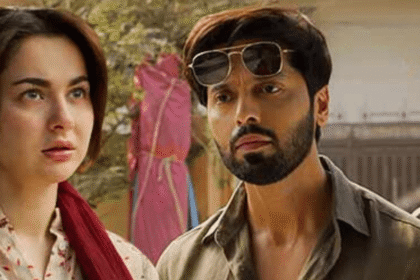Shabinda Farzeen
Pakistan’s Lollywood: A Tale of Rise, Fall, and HopePakistan’s film industry, often called Lollywood, began in Lahore in 1929. Before Pakistan’s creation, Lahore was a key filmmaking hub in British India. However, the 1947 partition led to about 75% of film industry workers migrating to India, causing a significant setback. The industry lacked artists, scriptwriters, directors, producers, and skilled technicians.After much struggle, Pakistan’s first film, “Teri Yaad,” was released on August 7, 1948. It flopped, which was understandable given the recent violence and instability. The film’s hero, Nasir Khan, Bollywood star Dilip Kumar’s brother, tried his luck in Pakistan but returned to India in 1951 after failing to find success.In 1949, Evergreen Studios was established, becoming the country’s largest studio. It produced films like “Chann Way,” “Sassi,” and “Umar Marvi,” which didn’t achieve much success.
However, on April 5, 1950, the studio released “Do Aansoo,” which ran for 25 weeks and became Pakistan’s first silver jubilee film.The 1950s were better for the industry. The first Pakistani female director, Madam Noor Jehan, directed “Chann Way” in 1951. Films were also made in local languages, such as “Umar Marvi” in Sindhi.Cinema attendance grew, and on June 3, 1954, “Sassi” became the first Pakistani film to achieve golden jubilee status, running for 50 weeks.Producer Bari Malik’s Punjabi film “Yakke Wali” (1957), starring Musarrat Nazir, was a hit. It completed a golden jubilee and became Pakistan’s highest-grossing film. This feminist film, ahead of its time, told the story of a brave woman supporting her family by driving a horse carriage.Film magazines and awards also emerged.
Film journalist Ilyas Rashidi, the founder of film journalism in Pakistan, started the Nigar Awards in 1958. These awards recognized excellence in various filmmaking fields and were an extension of Rashidi’s Nigar Magazine (1948), Pakistan’s first weekly dedicated to Pakistani cinema.The 1960s are considered the golden age of Pakistani cinema. As the world moved away from black and white films, Pakistan released its first color film, “Azra,” in the early ’60s.In May 1961, the Urdu film “Bombay Wala” was approved for release. However, its name, similar to the Indian city of Bombay (now Mumbai), caused tension between the two countries, leading to accusations against the censor board.Political themes began to appear in films, such as “Shaheed” (1962), which was about the Palestinian issue and became popular.On March 9, 1962, Fatima Jinnah premiered “Chiragh Jalta Raha” in Karachi.
This film marked the debut of versatile actor Mohammad Ali, as well as Zeba, Talat Hussain, Kamal Irani, and Deeba.Bollywood films were popular in Pakistan until the 1965 war, when they were banned. This ban surprisingly boosted Pakistani cinema, increasing viewership and cinema owners’ profits.Wahid Murad, a producer, scriptwriter, and actor, realized the potential of Urdu films and began producing more of them.On March 18, 1966, the black and white Urdu film “Armaan,” produced by Wahid Murad and starring him and Zeba, was released. Twenty years after Pakistan’s creation, “Armaan” was the first film to run for over 75 weeks and achieve platinum jubilee status. It introduced pop music to the country with the song “Ko Ko Korina.” The film’s music remains memorable, with songs like “Akele Na Jana” considered classics.Other notable films of this era include “Badnaam,” “Neela Parbat,” “Lakhon Mein Aik,” “Chakori,” and “Zinda Laash,” Pakistan’s first X-rated horror film. Until 1970, good Pakistani films continued to be produced.The 1971 war changed everything. The Pakistani film industry had three centers: Dhaka, Lahore, and Karachi.
When East Pakistan became Bangladesh, the industry suffered a major blow, losing 55% of its audience. Many talented filmmakers and industry professionals moved to Bangladesh. In 1971, Pakistan had about 400 cinemas, a quarter of which were in East Pakistan. In 1970 alone, East Pakistan produced 114 films, including three in Urdu. This situation dealt another severe blow to the industry, reminiscent of the partition.Political instability further weakened the film industry. In 1976, a mob in Quetta set fire to a cinema before the release of Pakistan’s first Balochi language film.Despite these challenges, efforts to produce better films continued. Pakistan’s first English language film, “Beyond the Last Mountain,” was released on December 2, 1976. To date, it remains Pakistan’s only English feature film. Its Urdu version, “Musafir,” failed at the box office.On March 18, 1977, the Urdu film “Aina” was released in Karachi.
It is Pakistan’s only crown jubilee film, running for 401 weeks (almost 4 years) from March 1977 to 1982. Its music, composed by Robin Ghosh, with singers like Mehdi Hassan, Mehnaz, Nayyara Noor, and Alamgir, was very successful. The theme song “Mujhe Dil Se Na Bhulana” was a super hit.However, internal issues worsened. On July 5, 1977, the military removed the civilian government, imposed martial law, and suspended the constitution. The country came under General Zia-ul-Haq’s dictatorship. Zia removed the democratically elected Zulfiqar Ali Bhutto, who was controversially executed after a trial. Strict laws were enforced, restricting press freedom. The print media was controlled by the military government. Journalists who opposed the government were punished.
Television and radio, already state-owned, became mouthpieces of the military regime.Zia-ul-Haq’s Islamization policies restricted civil liberties and banned entertainment programs, including theater and stage performances. The government aimed to confine people to their homes to prevent public gatherings and dissent. With cinemas and other activities closed, people turned to home entertainment, particularly Indian films on VCRs. This led to a “VCR culture,” which dominated homes for two decades. Zia’s Islamization severely damaged the film industry, with effects still felt today.The Zia government introduced new rules for film producers, requiring them to have degrees. Many experienced but non-degree-holding producers were barred from making films, causing a sharp decline in production.
Many cinemas in Lahore were forcibly closed to emphasize Pakistan’s Islamic identity. There were also restrictions on what could be shown in films, such as expressions of love, dance scenes, nightclubs, alcohol, social issues, and criticism of government departments. These restrictions left filmmakers with few subjects to work with, leading to a decline in film production. In 1979, only 42 of 98 films produced were in Urdu, and the following year, the total number of films dropped to 58, with only 26 in Urdu.Despite these challenges, the industry hoped to revive itself. In 1989, “Shaani” was released, Pakistan’s first science fiction film. While it flopped domestically, it was successful internationally, winning awards at film festivals in Egypt, Korea, and Moscow.By 1990, the Pakistani film industry had largely collapsed. Annual film releases dropped from 100 to just 40. Cable television gained popularity during this time.In 1999, the military, led by General Pervez Musharraf, removed Nawaz Sharif from power. However, Musharraf proved beneficial for Pakistani media. Unlike Zia, he did not impose bans but privatized radio and TV channels, allowing new channels to enter the media industry.
This led to the introduction of news, entertainment, and film channels, including Film Asia Entertainment, dedicated to Pakistani films.Musharraf’s positive media policies gave the Pakistani film industry a new direction. In the 2000s, some good Pakistani films were produced, and filmmakers tried to revive Lollywood. In 2007, “Khuda Kay Liye” was released, the first film since the 1965 ban to be released simultaneously in India and Pakistan. It was screened in over 100 cinemas in 20 Indian cities. During this period, the ban on Indian films was lifted. Successful films like “Waar” and “The Legend of Maula Jatt” were also released.The period from 2011 to 2018 was relatively good for Lollywood, with blockbuster films like “Bol,” “Love Mein Ghum,” and “Jugni” (2011). “Bol” was the most successful Urdu film of the year, revolving around a Muslim family that refuses to accept its transgender son.In 2012, Sharmeen Obaid-Chinoy’s “Saving Face” won Pakistan its first Academy Award for Best Short Documentary. It told the story of acid attack survivors in Pakistan.In 2013, “Waar” and the Pashto film “Zama Arman” were released.
Other films like “Josh,” “Main Hoon Shahid Afridi,” and “Ishq Khuda” were also released, but “Waar,” starring Shaan Shahid, was the biggest hit.In 2014, Nabeel Qureshi’s comedy film “Na Maloom Afraad” was a hit, praised by Indian director Imtiaz Ali.Films continued to be produced until 2019, including “Jawani Phir Nahi Ani,” “Bin Roye,” “Wrong Number,” “Karachi se Lahore,” “Manto,” “3 Bahadur” (an animated movie), “Actor in Law,” “Janaan,” “Lahore Se Aagey,” “Punjab Nahi Jaungi,” “Teefa in Trouble,” “The Donkey King,” and “Load Wedding.”However, Lollywood remains unstable. Pakistani filmgoers don’t frequent cinemas as much because of the low quality of domestic films. Filmmakers lack unique ideas, and the unavailability of modern cinema technology forces people to watch Bollywood content. Repetitive themes and inappropriate casting also contribute to the industry’s decline.A solution could be to make films based on social issues and stories that revive social norms and culture, allowing Pakistani audiences to connect with the film.Turkish and Korean dramas and films are popular worldwide because of their unique stories.
These stories resonate with audiences and generate millions in revenue, also promoting tourism. Additionally, Indian, Turkish, and Korean content dominates digital platforms like Netflix, Disney, and Amazon Prime, and they have created their own digital platforms.The Pakistani audience wants change, with unique stories and different faces. The same actors and stories are repeated in dramas and films, leading audiences to prefer foreign content.Pakistan is set to launch its first Netflix drama series, “Jo Bachay Hain Sang Samait Lo,” starring Mahira Khan, Sanam Saeed, Fawad Khan, and Ahad Raza Mir. This is a positive development, and it is hoped that this trend continues, as Pakistan has no shortage of talent, but the industry has often suffered due to being in the wrong hands.








